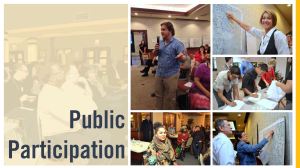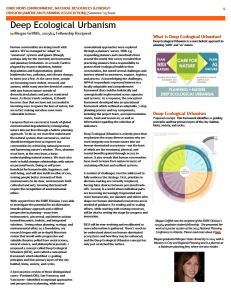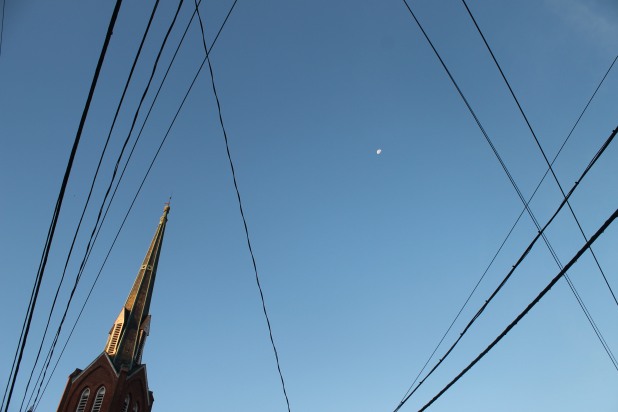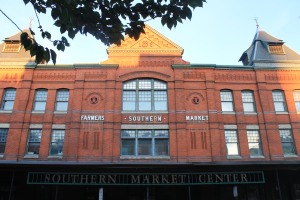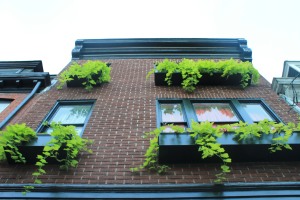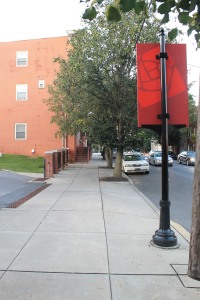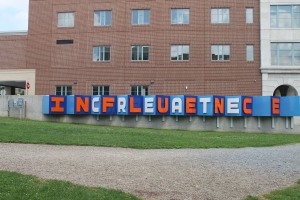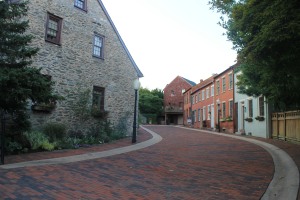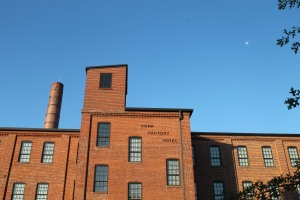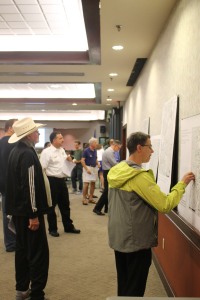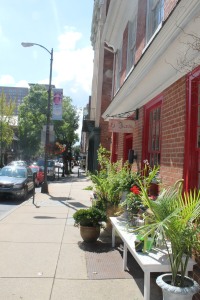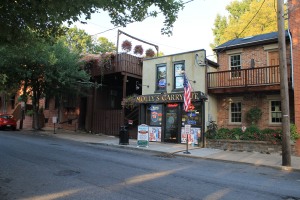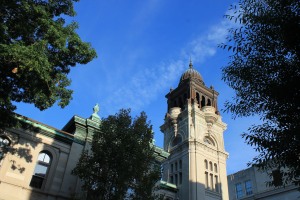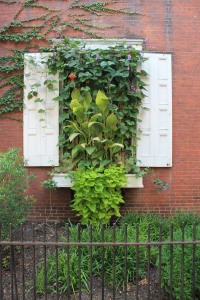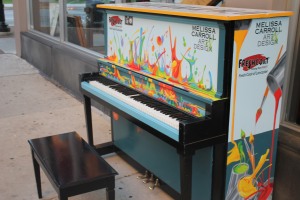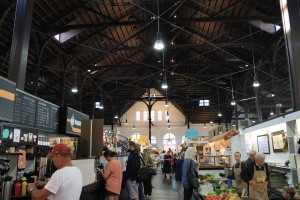Here, I find myself in week 6 of my independent study, halfway through Unit 4: Learning from Nature. Where I am, I feel it is a good point to draw attention to a critical error which I’ve encountered in some of the readings previously reviewed, as well as a fundamental flaw in most visionary planning: utopian ideals. Whether an architect/designer/theorist/other will admit it or not, much of what constitutes the bulk of writings in the field of ecological urban design is clearly rooted in a very utopian foundation.
Utopian ideals often do more harm than good. In a little over a century, we have witnessed many visionary concepts (Garden City, for example) as they completely turn on themselves, leaving people trapped amidst the very conditions which the utopian vision intended to change, though possibly more severe than they were at the start and often compounded with newly discovered/created issues.

Luc Schuiten’s Vegetal City
Some of my most influential authors can at times suffer the idealist dilemma. Their designs are gorgeous illustrations of the perfect world where nature and city intersect harmoniously, where communities are verdant and whimsical, very much reminiscent of paradise. I am particularly in love with Luc Schuiten’s concept of the Vegetal City (above) and Richard Register’s Ecocities; but as much as I long for a world like the ones these and other visionary architects often depict, I can sometimes feel defeated when I realize the likelihood of such places ever existing is slim to none. Yet, the truth is, paradise absolutely cannot be the answer- we cannot abandon our current cities, and we don’t have the resources to start such grand experiments.
Given the frustrating conditions of our urban environments, it’s not difficult to see why so many create a utopia in the first place. In his book, Privatopia: Homeowner Associations and the Rise of Residential Private Government, Evan McKenzie noted:
“Utopian thinkers are inspired to create their ideal worlds in large part because of their dissatisfaction with the world around them, and their solutions tend to be reactive and one-dimensional.” p. 23
It’s no wonder that many of us, in a desperate attempt to “fix” the issues of current development patterns, dream up perfect worlds where everyone is happy. After all, how many of us declared as children that we would change the world by making it a better place for all to live. In our attempts to address the current ailments of our cities, we mustn’t throw out the baby with the bathwater. So perhaps in this case, I can’t really say we’re learning from nature, but we’ve certainly learned from our many past mistakes; such valuable lessons cannot be wasted in lieu of the next best thing in urban planning.
In the same chapter, author McKenzie goes on to quote Fritzie P. Manuel, a scholar of utopian thought:
“The great utopians have all borne witness to their anger at the world, their disgust with society, their acute suffering as their sensibilities are assailed from all sides. They withdraw from this world into a far simpler form of existence which they fantasy. The escape from everyday conflicts and disappointments has a childlike quality. And their way back from utopia, their return to the real world they had abandoned, is often characterized by devotion to a fixed idea with which they become obsessed. They clutch frantically at this overvalued idea that at once explains all evil and offers the universal remedy, and they build an impregnable fortress around it.”
I tend to get that way, too- in all realms of my life. I convince myself that the cure to the clutter in my life will be more baskets, bins, and boxes. While compartmentalizing things helps (well- in planning, this is an entirely different issue for another time), it’s not a panacea. I have to change my habits and behaviors, and address the items that cause the clutter in the first place. Thinking about what both McKenzie and Manuel are saying here, I think it’s quite important to note that there are useful elements of the current conditions as well as some worthwhile features of the idealist visions, but they must be viewed together.
I believe I had mentioned earlier in this series my discontent with the greenfield alternative. After all, the greenest building is the one already standing. Wouldn’t that also mean the greenest city is the one we’re already inhabiting? Why start over? I have been disappointed with the lack of adaptive solutions until I came across an article from 2010 which describes Denver, Colorado’s planned Living City Block development. Neil Takemoto wrote in his Cooltown Studios review of the project:
“If a cell is defined as the smallest structural and functional unit of an organism, if a building were an organism, its rooms would probably be its cells (‘cellula’ is Latin for a small room). For a city though, it may be more helpful to associate cells with its blocks, fitting perhaps since a cell is often described as the building blocks of life. From the air, a city’s blocks resemble cell structure more than its buildings.” [emphasis in original]
This beautiful introduction made the article an ideal fit for my biomimicry study, but the article also happened to perfectly compliment the topic of this post. Quoting the mission of the Living City Block project, Takemoto notes goal is to regenerate existing cities! It’s such a relief. Now still, the project is very sustainably oriented, and not excessively ecologically focused, but the renderings (see below) depict a pleasing amount of green infrastructure.

Living City Block Project
It’s very important to me, and will hopefully be clear throughout this study, that existing cities are the focus of my attention. While I’m encouraged by projects like Masdar, the Abu Dhabi planned city which intends to be a sustainable, zero-waste, zero-carbon, carbon-free city, such places do not address the urban areas which are currently a main reason we’ve developed concepts like “zero-waste” and “zero-carbon” in the first place. Building efficiently tomorrow will do us no good if we allow the negative elements from today’s cities to remain.
Articles Linked in Text:


